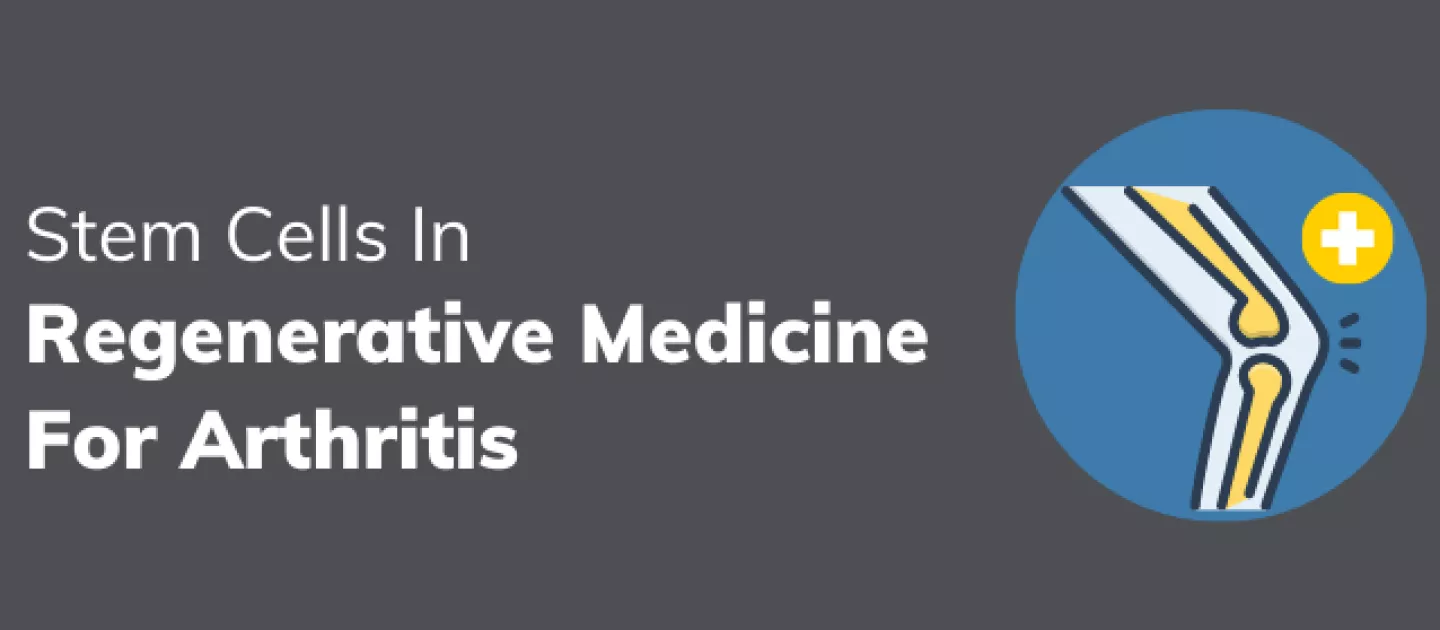Pain, stiffness, and swelling are all common feelings people who have arthritis know all too well. Arthritis can make it hard to work, enjoy hobbies, and make even minor everyday activities challenging. Most of us take for granted simple tasks like tying shoes or opening jars.
Because people with arthritis can struggle with these things, finding an effective, long-term treatment can improve their quality of life. Suppose we could find a cure - that’s even better!
Arthritis Isn’t Only For “Old” People
Many think that arthritis only affects older people and happens because they’re getting older. The younger we are, the less we think about how we could be affected by such a condition – but there are over 100 kinds of arthritis and related conditions. The reality is that arthritis does not discriminate by age. It’s so common that it’s the leading cause of disability in adults in the United States. And while it primarily affects older adults, younger adults can get it too.
Types of arthritis fall into four major categories:
- Degenerative types wear away the cartilage between bones, causing swelling, stiffness, and pain.
- Inflammatory types are caused by the body’s immune system misfunctioning and attacking the joints.
- Metabolic arthritis is when there is too much of a substance called uric acid in the blood that ends up in joints and tissues and causes pain.
- Infectious types are caused by a fungus, bacteria, or virus that causes inflammation in the joints.
Most types of arthritis cause inflammation. The challenge is that too much inflammation over a long time causes cartilage and other protective joint tissue to break down. Without tissue to cushion bones, they rub against one another, causing pain and limited mobility.
Arthritis is treatable, but there’s no cure for now, though a unique area of science known as regenerative medicine may hold the key to finding one. Researchers see potential in clinical trials using stem cells from umbilical cord tissue to help conditions with body tissue damaged by inflammation from autism, sports injuries, and Parkinson’s disease. And now . . . maybe arthritis!
Treating The Cause (Not Just the Symptoms) Of Arthritis With Cord Tissue Stem Cells
Current treatments for arthritis usually focus on relieving pain and inflammation with medication or surgery. Still, it doesn’t ever fully go away, which is why finding a cure is so important. Think about how great it would be to have a cure for arthritis instead of having to manage it. Where treating arthritis symptoms can make major improvements in someone’s life, a cure would be a game-changer. The challenge with finding a cure is once our body’s tissue and joints are damaged, it can’t repair it.
Cartilage is different from any other tissue in our body when it comes to healing itself, and that’s because it doesn’t have its own blood supply. Think of your body’s blood supply like a delivery truck. It carries and drops off nutrients that the body needs for healing. Without those nutrients, cartilage can’t heal. Or can it? Could our bodies heal cartilage with a bit of help? Regenerative medicine might be the key!
Regenerative medicine uses living cells (like stem cells from umbilical cord tissue) to help the body heal itself using its own processes to regenerate or repair damaged cells. Cord tissue stem cells have a remarkable ability to regenerate new cells, grow into different types of cells, and replace damaged cells with healthy copies. What are some of the cell types they can grow into? You guessed it – bone and cartilage cells – the very ones that arthritis damage. And, because arthritis causes inflammation, It only makes sense that these cells' special qualities could make them invaluable for treating arthritis.
Researchers using cord tissue stem cells in regenerative medicine are learning more about these amazing cells every day. Every day brings us closer to finding a better way to treat and hopefully one day cure arthritis. And who knows what other conditions could benefit from the amazing power of cord tissue stem cells to regenerate damaged tissue in the future? We are excited to find out.
Follow us on Facebook, Twitter, and Instagram to join the conversation and stay up-to-date on cord blood & tissue, genetics, pregnancy, and everything in between!
Disclaimer: Banking cord blood does not guarantee that treatment will work, and only a doctor can determine when it can be used. PerkinElmer and ViaCord do not endorse or make recommendations with respect to research, medication, or treatments. All information presented is for informational purposes only and is not intended as medical advice.
Resources:
CDC. Arthritis. https://www.cdc.gov/chronicdisease/resources/publications/factsheets/arthritis.htm
Arthritis Foundation. What Is Arthritis. https://www.arthritis.org/health-wellness/about-arthritis/understanding-arthritis/what-is-arthritis
NIH. Anti-inflammatory and antioxidant effects of mesenchymal and hematopoietic stem cells in a rheumatoid arthritis rat model. https://pubmed.ncbi.nlm.nih.gov/29905411/
NIH. Umbilical cord mesenchymal stem cells: the new gold standard for mesenchymal stem cell-based therapies? https://pubmed.ncbi.nlm.nih.gov/24552279/
Cleveland Clinic. How Rheumatoid Arthritis Affects Young Adults. https://health.clevelandclinic.org/how-rheumatoid-arthritis-affects-young-adults/











